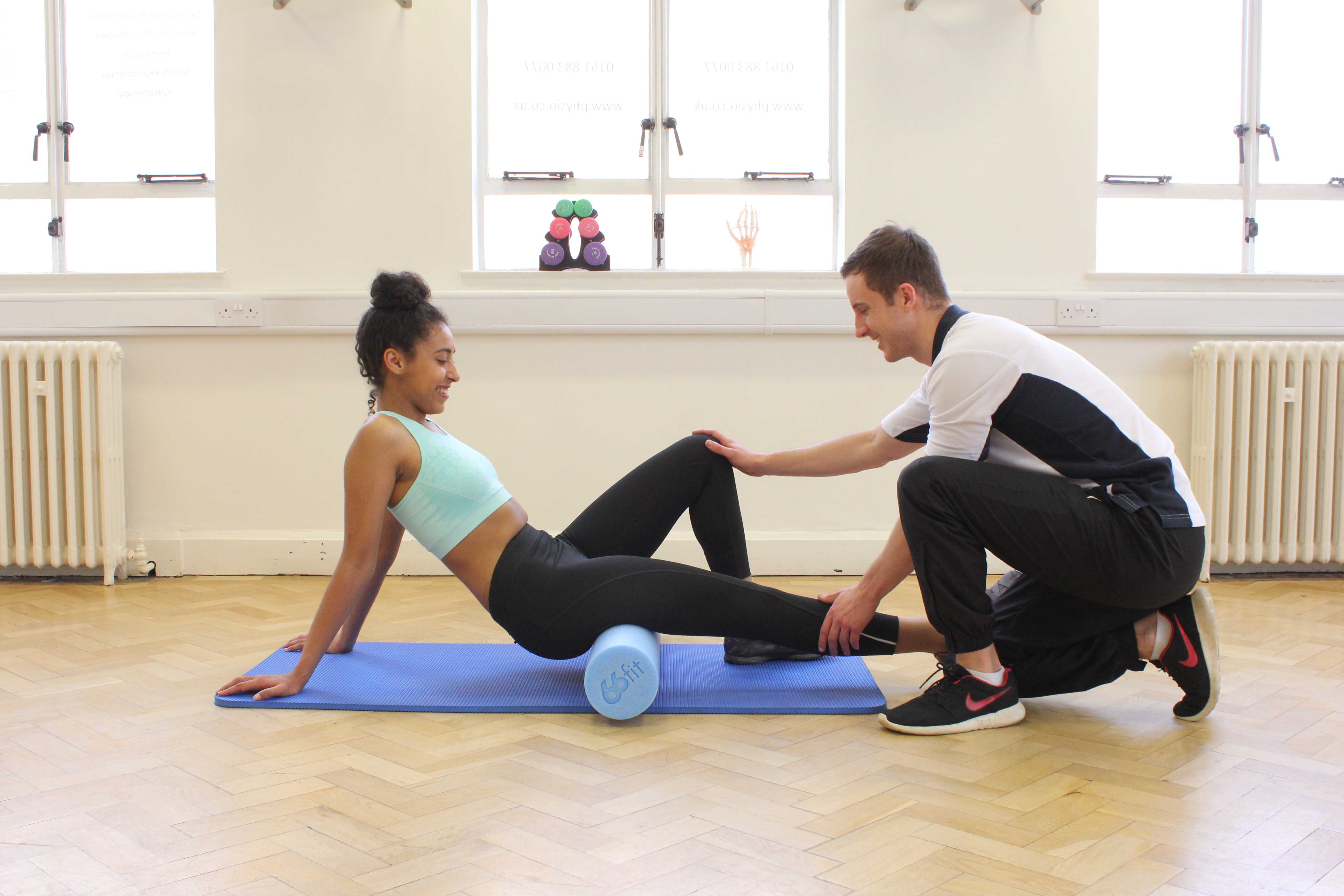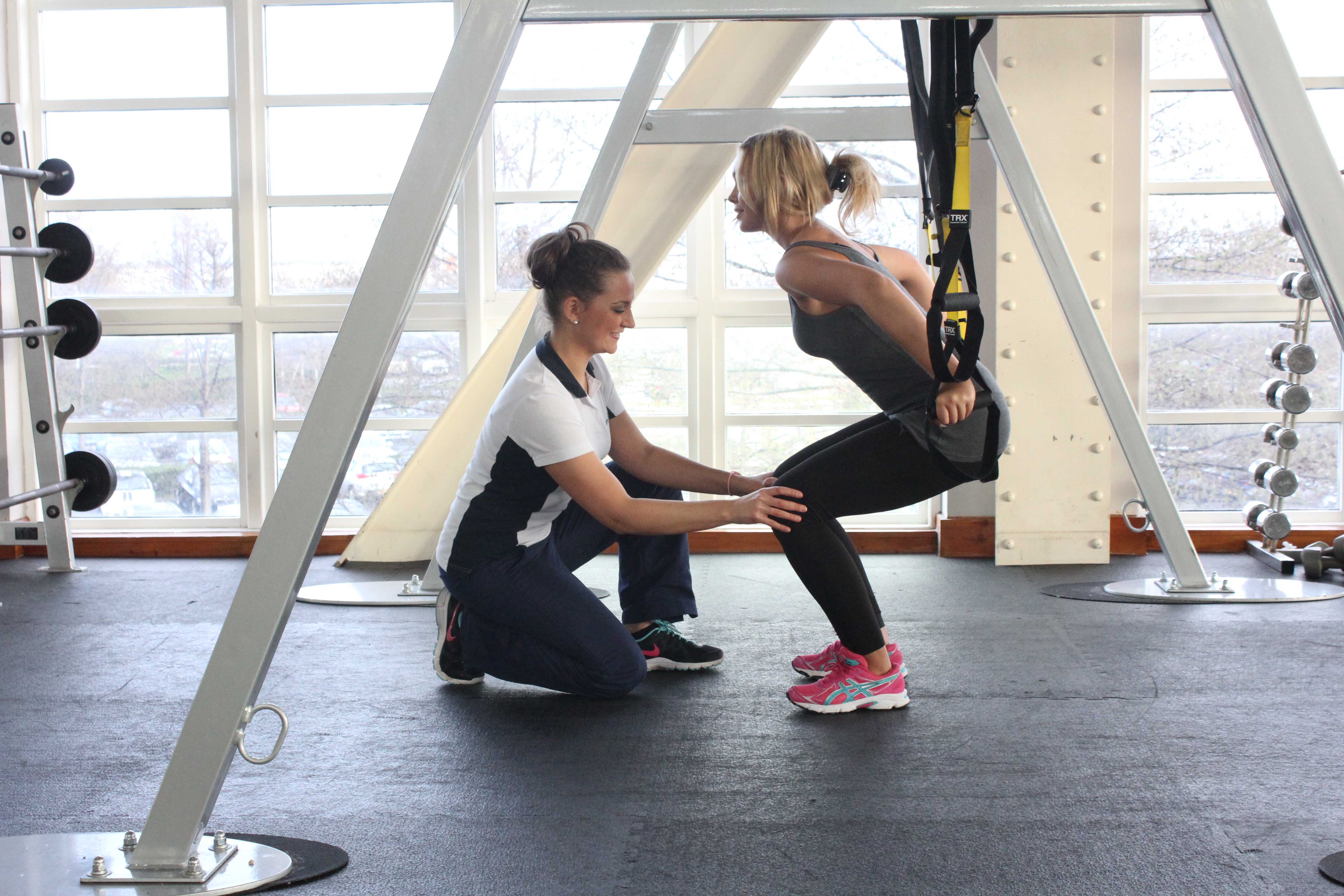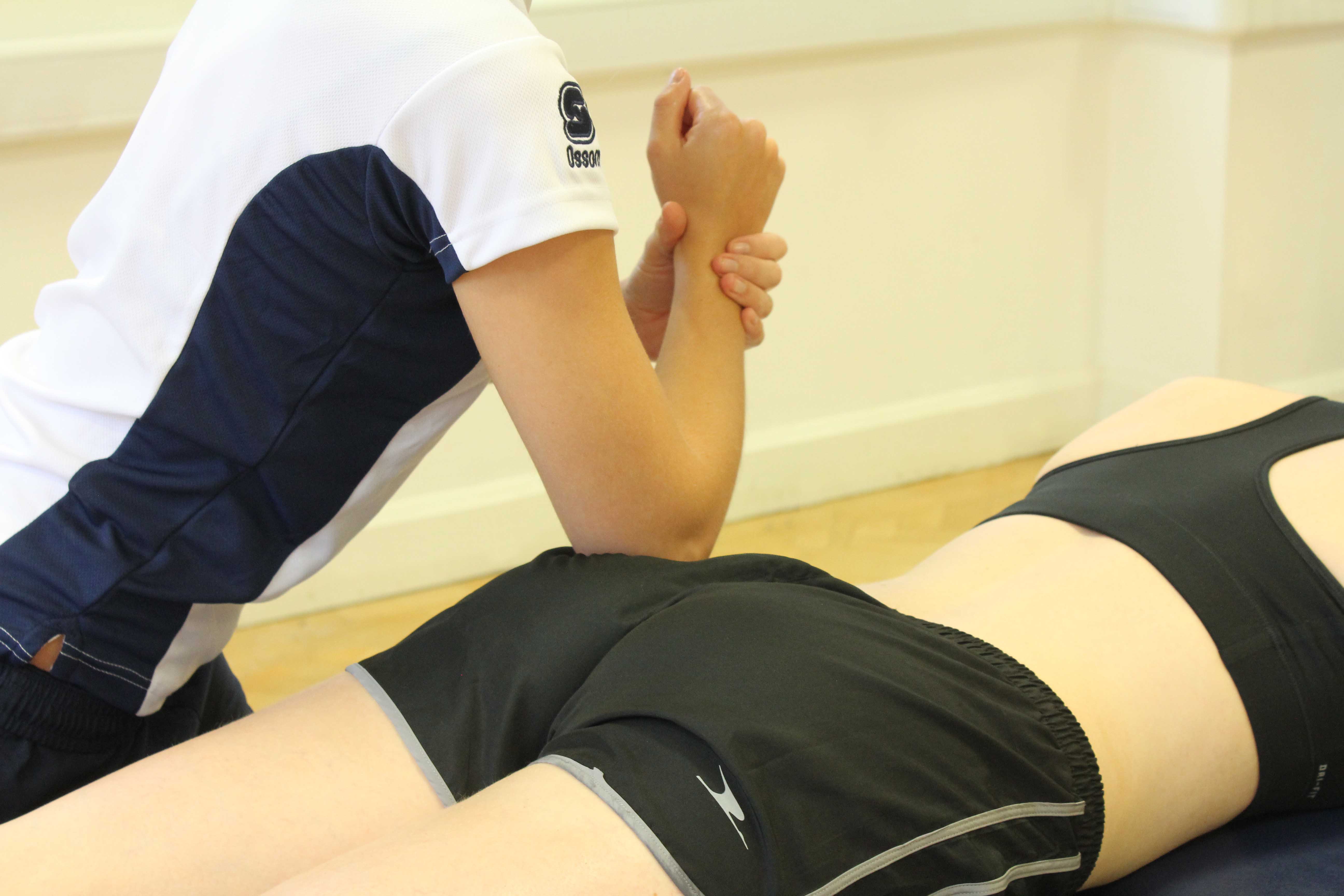Avulsion Fracture of the Ischial Tuberosity
An avulsion fracture occurs when the hamstring muscle tendon pulls a fragment of the ischial tuberosity (sitting bone) away from your pelvis. Your pelvis provides the bony connection between your trunk and lower limbs while providing a site for numerous muscle attachments. Your pelvis is made of 3 parts, your Ilium, Ischium and Pubis. The posterior (back) part of your pelvis is called the ischium on which lies your ischial tuberosity (bony prominence). Attached to this are your hamstring muscles, biceps femoris, semimembranosus and semitendinosus which allow you to extend your hip and flex your knee.
When you injure your hamstrings, you will generally tear muscle fibres of the muscle belly. However, in severe cases, you can tear your hamstring from its point of origin on the ischial tuberosity. This is called a hamstring origin avulsion. In extreme cases, an avulsion fracture will occur where the hamstring muscle tears the bone where it attaches off your pelvis. This happens after a sudden and forceful eccentric contraction of your hamstrings with your hip flexed e.g. hurdling or performing the splits. When this occurs, it is necessary for you to undergo surgery in order to reattach the bones.
An open reduction internal fixation procedure is carried out where your buttock is cut open and the bony fragment reattached to your pelvis through screws. Your hamstring is exposed underneath your gluteal muscles and any scar tissue that may have formed is removed. Taking care not to damage your sciatic nerve, which runs close to where your hamstring inserts onto your ischium, your ischial tuberosity is attached back to your ischium.
This injury can often be assumed to be a normal hamstring tear and so surgery can be delayed. Physio.co.uk can help to manage your symptoms during this period minimising any muscle atrophy, reducing contractures and providing a platform for post-surgical rehab.
Correct diagnosis of a hamstring avulsion fracture is done through an MRI scan. If you suspect an avulsion fracture there will also be a visible shortening of your hamstring with a ‘popeye’ style muscle developing towards your knee.
 Above: Post surgical rehabilitaion of hamstring injury
Above: Post surgical rehabilitaion of hamstring injuryPhysiotherapy prior to Surgery for an Avulsion Fracture of the Ischial Tuberosity
Prior to surgery for an avulsion fracture of the ischial tuberosity, physiotherapy can help to manage your symptoms and lifestyle while also preparing you for surgery. Physio.co.uk will not only strengthen you lower limb but provide a strong platform for post-operative rehabilitation which will ultimately lead to a more successful and quicker rehab time. Treatment will include:
- Cryotherapy
- Pain management
- Gait analysis
- Prevention of muscle imbalances
- Soft tissue therapy
- Biomechanical assessment of lower limb, pelvis and lower back
- Stretches
- Hip and leg strengthening exercises
- Treatment of neurological symptoms
- Home exercise programme
- Advice on surgery and post-surgical management
 Above: Supported quats performed under supervision of specialist MSK Physiotherapist
Above: Supported quats performed under supervision of specialist MSK PhysiotherapistSymptoms following Surgery for an Avulsion Fracture of the ischial Tuberosity
Following surgery, your leg will be immobilised, you will be given crutches and will be limited to non-weight bearing for 2 weeks. Following surgery is it normal for you to experience common symptoms including:
- Pain
- Swelling
- Bruising
- Neurological symptoms – numbness, pins and needles
Physiotherapy following Surgery for an Avulsion Fracture of the Ischial Tuberosity
Following surgery for an avulsion fracture of the Ischial Tuberosity, physiotherapy is a critical component of rehabilitation. Physio.co.uk will provide a thorough assessment of your entire lower limb and back and explanation of your treatment. Physio.co.uk will then develop a comprehensive rehabilitation programme inclusive of all related problems, focussing initially on acute management and progressing on to regaining full return to functional and sporting activities.
 Above: Deep tissue massage of the gluteus muscle by experienced therapist
Above: Deep tissue massage of the gluteus muscle by experienced therapistWeeks 0-2
Initial focus with Physio.co.uk will be on post-surgical management and the reduction of acute symptoms. Treatment will include:
- Cryotherapy
- Pain management
- Electrotherapy
- Gait analysis including non-weight bearing crutch walking
- Postural education
- Wound management
- Soft-tissue release for hip and back
- Trigger point release of gluts
- Wound management
- Advice and education
Weeks 2-4
During this stage your resting splint will be reduced gradually increasing the amount of leg bend you are limited to. You will progress on to partial weight bearing and be encouraged to stretch your leg within your tolerance. Muscle imbalances will be addressed to restore correct pelvic alignment reducing the strain exerted on your hamstrings. Treatment will include:
- Passive and active assisted hip extension and knee flexion
- Active assisted quadriceps and calf exercises and stretches
- Ankle range of movement exercises
- Hydrotherapy – walking
- Gain management – progress of to accurate partial weight bearing.
- Soft tissue release – hip, quadriceps and calf
- Hip stability strengthening
- Massage
Weeks 4-8
Four weeks after your surgery, your range of movement will slowly be increasing and you will be able to progress to functional and then normal weight bearing without the use of crutches. Initial strengthening exercises can begin and there will be a continued focus or helping to regain range of movement and functional use of your leg. Treatment will consist of:
- Early static stretching
- Functional weight bearing – progress to full weight bearing
- Continued active assisted knee flexion
- Proprioceptive neuromuscular stretching
- Static strengthening of quadriceps, hamstring and calf
- Hydrotherapy – b walking, jogging
- Continued hip stability strengthening
- Gait re-education
- Trigger point therapy
- massage
Weeks 8-12
Following 8 weeks of rehabilitation with Physio.co.uk, you will have seen marked improvement in movement available. Proprioceptive training will be integrated into treatment and you will be encouraged to begin strengthening work of your hamstrings. A strong focus will be on improving stability through range to prevent re-injury and maximise rehab potential. Treatment will include:
- Begin hamstring strengthening
- Active assisted hamstring lengthening to 3/4 range
- Active hamstring range of movement exercises To 1/2 knee flexion
- Begin functional training – hill walking, stair walking
- Muscular endurance
- Proprioceptive training
- Ballistic training
Months 3-6
The final part of rehabilitation with Physio.co.uk will concentrate on regaining full range of movement, full strength of your hamstrings and the inclusion sport specific activities. Our goals now are to return your leg to its pre-operative state and prevent any secondary problems from occurring. Full recovery can take up to 6 months with Physio.co.uk continuing to provide an intense and comprehensive rehabilitation programme to ensure and effective and complete recovery. Treatment will include:
- Attainment of full range of movement
- Attainment of full hamstring strength
- Begin running
- Hamstring hypertrophy
- Eccentric hamstring strengthening
- Integrate sport specific exercises
- Advanced proprioceptive training
- Long term management
Summary
An avulsion fracture of the ischial tuberosity occurs when a fragment of bone separates from your ischium during a forceful contraction of your hamstrings. Your ischium is your sitting bone, so when a bony fragment is broken off this will cause pain requiring surgery in order to reattach the bone back to your pelvis. The bone is fixed back to your ischium using screws. Following surgery it is necessary to undergo a rehabilitation programme to return full function of your leg. Physio.co.uk will develop a comprehensive rehabilitation programme focussing on movement, strength and function with a set of clear patient directed goals helping to direct treatment. Call Physio.co.uk now on 0330 088 7800 for more information or to book an appointment please contact us.

 0330 088 7800
0330 088 7800





































